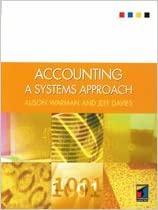Answered step by step
Verified Expert Solution
Question
1 Approved Answer
Kieso 1 8 , Ch 1 7 Revenue Recognition Standard for Revenue Recognition: Revenue from Contracts with Customers Asset - Liability Approach - Account for
Kieso Ch
Revenue Recognition
Standard for Revenue Recognition: Revenue from Contracts with Customers
AssetLiability Approach Account for revenue based on asset or liability arising from contracts with customers.
Contracts indicate terms and measurement of consideration and specify promises that must be met by each party.
Key Objective: Recognize revenue to depict transfer of goods or services to customers in amount that reflects the consideration that the company receives or expects to receive in exchange for goods or services.
FiveStep Process for Revenue Recognition:
Identify the contract with customers.
Identify the separate performance obligations in the contract.
Determine the transaction price.
Allocate the transaction price to the separate performance obligations.
Recognize revenue when each performance obligation is satisfied.
Revenue Recognition Principle: Recognize revenue in the accounting period when the performance obligation is satisfied.
See BEAN for example of FiveStep Process: pp to
Explain and apply the fivestep revenue recognition process:
Identify Contract with Customers Step A contract is an agreement between two or more parties that creates enforceable rights or obligations. It can be written, oral, or implied by customary business practice. See Example p
Identify Separate Performance Obligations Step A performance obligation is a promise to provide a distinct product or service to a customer. A product or service is distinct when customer is able to benefit from a good or service on its own or together with other readily available resources. See Examples and pp to
Determine Transaction Price Step Transaction price is the amount of consideration that company expects to receive from customer. May be fixed or variable. When estimating variable consideration may use Expected Value probabilityweighted amount in range of possible amounts or Most Likely Amount may be appropriate if contract has only two possible outcomes See Example pp to Also See Illustration p for Transaction Price Summary.
Allocating Transaction Price to Separate Performance Obligations Step Based on relative fair values what company could sell good or service for on standalone basis. See Examples and to

Step by Step Solution
There are 3 Steps involved in it
Step: 1

Get Instant Access to Expert-Tailored Solutions
See step-by-step solutions with expert insights and AI powered tools for academic success
Step: 2

Step: 3

Ace Your Homework with AI
Get the answers you need in no time with our AI-driven, step-by-step assistance
Get Started


